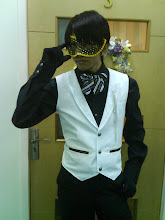To someone not a part of the punk, emo, goth type subcultures, the three may seem very similar, especially when it comes to emo and goth.
Nothing could be more laughable to people who subscribe to these lifestyles, however. If you want to understand emo and goth, you need to understand their roots.
Both emo and goth stem from the punk culture, and they both retain those roots, although emo has stuck closer to its punk origins than has goth. All three of these lifestyles stem from music.
Music is highly important to the human race – it acts as an outlet, and it moves us emotionally. Punk music has had a sort of underground popularity for decades now, and it has spawned other, similar styles
Fashion is as much an art form as music, so it stands to follow that each separate branch of this tree would have its own distinct style. Of course, you can’t stereotype and say that every person within a fashion mode wears the exact same clothes. It’s no more true to say that every goth wears all black than it is to say that every preppy wears pink polo shirts.
Emo, goth and punk have signature styles, and the differences are obvious if you look closely. Goths do tend to wear a lot of black, but they also experiment sometimes with other dark colors. Black pants, skirts, corsets, interesting tights, etc. are all typically associated with goth.
T-shirts of bands popular among goths also abound, as does black eye make-up lipstick, nail polish, and heavy footwear (combat boots!). The easiest way to differentiate between emo and goth is accessorizing. Goths tend to wear heavy Victorian and other historically-inspired jewelry and accessories.
Emo fashion doesn’t stay away from black, but it’s not nearly as common to see black clothes as it is in the goth world. It is typical for hair, but not clothes.
Clothes can sometimes be thought of as a more modern cross between grunge and goth. Hoodies, scarves, and tight jeans are very typical.
Once you understand the basics of what differentiates emo, goth and punk, you won’t mistake one for the other. Each group has its own aesthetic that makes it unique.
s0nG jUsT 4 y0u..
Coolz Blogs
-
-
-
I Am A Cat Person11 years ago
-
Happy New Year 201411 years ago
-
Chakra Zen Incantations12 years ago
-
-
Speech and Drama Project12 years ago
-
-
Incompleteness in Absence...13 years ago
-
C5 crew's beach time & BBQ13 years ago
-
-
-
Lagi Suka Tipu14 years ago
-
もう百回言いました!15 years ago
-
Bahasa Iban Part 315 years ago
-
-
-
-
-
-
-
-
-
-
-





















0 comments:
Post a Comment